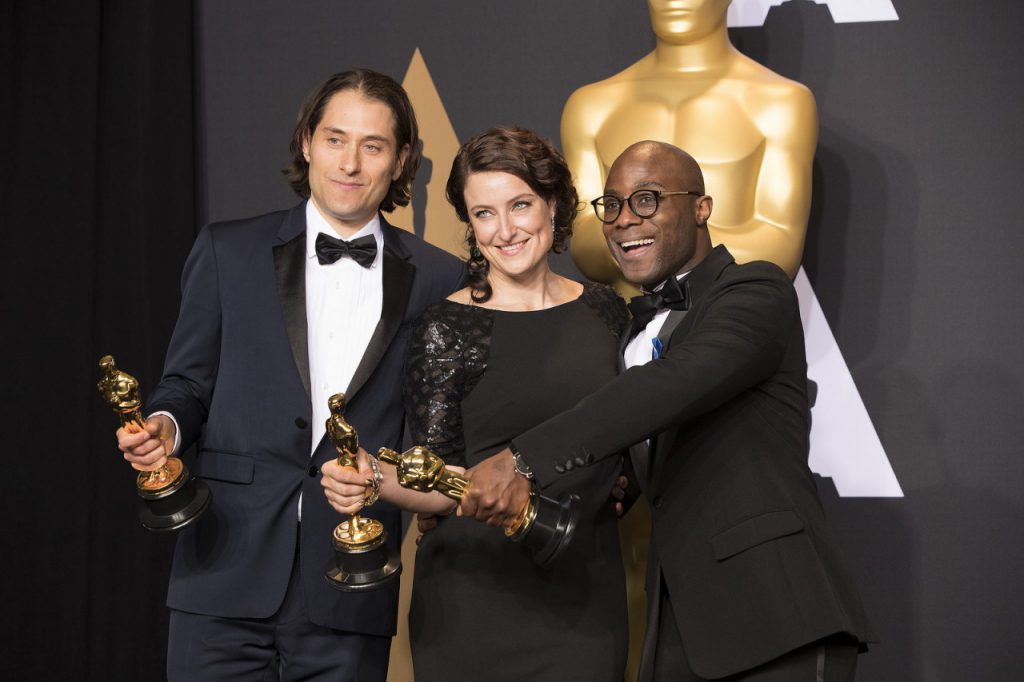The 89th Academy Awards, which took place on Feb. 27, 2017, were one of the most diverse in history. Breaking multiple records, including the amount of black Oscar winners and the first Muslim actor win, the show is being hailed as a huge step forward for Hollywood diversity.
“Compared to last year, it’s such a huge change. I think going forward, it’s going to open the doors to something more positive,” Bekah Bailey said.
Bekah Bailey is a theater student at Winona State University and an avid activist for the rights of the disenfranchised. She is a part of the WSU Student Senate, Full Spectrum, FORGE and the KEAP council, and is involved in the majority of campus events regarding diversity.
Though it is too early to call it a trend, Bailey said, society is shifting in favor of the marginalized.
“More so than ever, there are people and groups that are vocal about it not being fair and equal necessarily,” Bailey said. “Even though there is a lot of room for improvement, obviously, I think slowly but surely we’re seeing some sort of change.”
One of the more recent and visible movements was the #OscarsSoWhite campaign from several years ago, which focused on showcasing the disproportionate amount of white nominees and winners at the Academy Awards.
This year’s Academy Awards featured the most black winners in the show’s history and multiple other firsts.

The best picture winner, “Moonlight,” was a story about a young gay African American male and his search for understanding. It is the first LGBT film to ever receive the top honors.
J. Paul Johnson, a professor of film studies at Winona State, said while the film’s win is a significant moment for the Oscars, this is not the first time a shift has seemingly occurred.
“We might, of course, celebrate the fact that a film, an artistic, aesthetically significant film could examine a young black male’s search for definition of his own masculinity and sexuality,” Johnson said. “On the other hand, there have been other moments in history where people may have thought we were on the cusp of a watershed moment.”
Bailey said diversity issues stem from two main sections: The lack of drive from those not affected, and lack of accessibility.
Shifting an industry takes unilateral effort, Bailey said, and that change won’t occur without having everyone involve. It also involves bringing new artists to the forefront, but for many artists those opportunities either are nonexistent or overly difficult to achieve.
Accessibility for these creators is integral to the future of the industry, Bailey said. When an industry shows itself as unequal, some marginalized creators will see it as too difficult to enter and stop trying, she added.
Mary Jo Klinker, a professor of women’s and gender studies at Winona State, argued the inherent white male centricity of the industry leads to the continuation of diversity issues.
In any narrative art form, a large part of the writing stems from the artist’s life experiences. While there are always going to be outliers, the lack of diverse writers and creators leads to less diverse stories, Klinker said.
In a study titled “Inclusion or Invisibility? Comprehensive Annenberg Report on Diversity in Entertainment,” research at the University of Southern California found 21.8 percent of leading characters in films were of an underrepresented race. In terms of creators, it’s even smaller: Only 12.7 percent of film directors were underrepresented.
The gender disparity occurs en masse at the creation level. According to San Diego State’s Center for the Study of Women in Television and Film, women made up seven percent of all directors on the top 250 highest grossing films for 2016. In 2015, that proportion was at nine percent.

“Whose stories are told? Who gets to tell these stories?” Klinker said. We live in what feminist scholar and media critic Bell Hooks refers to as a ‘white supremacist capitalist patriarchy,’ when films are produced in this culture, it often reflects those values.”
Johnson said Hollywood’s problems with those values stem back to the beginning.
“The history of Hollywood is very much one of people of privilege and means creating depictions of others as lesser, as evil, as savage, as perverted, as sissies, etc,” Johnson said. “They are, at the same time, reflections of broader cultural thinkings and assumptions about those groups as well.”
Films are products of their time and culture in most cases, Johnson said, which is why diversity problems often come to the forefront. Even in the early days of cinema, when directors like D.W. Griffith were making major advancements to the medium, virulent racism was a common occurrence.
“It should be no surprise when films do represent and exhibit traits of their cultures including both positive and negative ones like inherent racism and prejudice,” Johnson said.
This, Klinker said, leads to the oft-cited “white savior” trope, involving a white character who arrives to save a marginalized people. Released last week, “Marvel’s Iron Fist” was criticized for that exact trope, with a white main character who becomes the guardian and hero of a Himalayan monastery.
In regards to casting choices, Bailey said, the most important aspect to consider is the theme of the film itself.
As a theater major, Bailey has worked on multiple shows during her time at Winona State University. According to her, plays are often easier for casting due to their universal nature. There are exceptions, like the black-oriented story of “Fences,” but for the most part these stories can be shifted to accommodate different races. As long as the casting doesn’t take away from any other group of people, then the question of justifiability can be ignored, she said.
Movies, Bailey said, are a bit more complicated.
“A movie is so often going to be specifically about a direct atmosphere in regards to who the plot is about,” she said. “More often than not movies aren’t universal so it is important to pay attention to who you’re casting.”
“Ghost in the Shell” is a recent film that has met with intense backlash. Starring Scarlett Johansson, the film is an American adaptation of the 1995 animated film by Mamoru Oshii. The original film and subsequent TV series were set in a futuristic cyberpunk version of Japan involves a counter-cyberterrorism group led by Major Motoko Kusanagi.
Johansson plays Major in the new adaptation, which has resulted in backlash on social media. Many protesters argue casting a white actor in a role that was originally Japanese ruins the themes of the original story, and while there hasn’t been as much backlash in Japan, Klinker said it is an indicator of a larger problem.
“A media term that is helpful for understanding this issue is “symbolic annihilation,” which is a way of upholding social inequality by misrepresenting or erasing a group of people in the media,” Klinker said.
Symbolic annihilation weaves its way into filmmaking in a number of forms, Klinker said. Whitewashing is the most predominant, where a white actor or actress is cast in a minority role. “Doctor Strange” and “Marvel’s Iron Fist” both were met with harsh criticism in this regard, placing white actors into roles that were either originally Asian or based on Asian culture.

Some other forms include “crip drag,” which involves placing an able-bodied actor into disabled roles, and ciswashing, or having cisgender – those who identify as their original gender – actors play transgender roles.
“For this reason, I think it’s important to hear what marginalized communities have to say about this casting and the way it impacts access to see themselves in cultural productions and media, which dictates a large portion of our social views,” Klinker said.
A few of the more problematic depictions Bailey described included the angry black woman, unstable relationships between persons of color and disabled character used as plot devices for the main character’s progression.
Money has always been a driving aspect of the film industry, which leads to occasionally problematic casting and narratives.
“Films are simultaneously aesthetic and economic ventures, and filmmakers need to take into consideration the box office draw of their actors in the films as they create and pitch in order to secure funding for their films,” Johnson said.
Bailey said while money is something to take into account, studios should begin to take risks on unproven actors of color. According to Bailey, letting those actors grow in their art will lead to more diverse plots and films overall.
Klinker made a similar point, suggesting the industry must change to accommodate more people and more sources for stories. By allowing people with diverse experiences to get into the industry, more of those narratives will be told.
“It is financially prohibitive for most people to tell their stories, which ensures further symbolic annihilation. The success of “Hidden Figures” made clear that audiences want to hear these stories,” Klinker said.
“Hidden Figures” tells the story of three African-American women mathematicians who helped NASA get astronauts into space in the early days of the United States space program. The film was both a commercial and critical success, with a box office gross of over $206.1 million.
Both “Hidden Figures” and “Moonlight” performed well during the awards circuit, culminating in a best picture win for the latter.

While it failed to win awards at last month’s show, “Hidden Figures” had one of the more prominent and important sections of the broadcast. The cast of the film brought out one of the mathematicians the film was based on, to rousing applause.
“This was a year of many firsts for the Oscars; however, a number of representations are still erased. Few films with Asian American and Latino casts were nominated.,” Klinker said. “The Black/White binary of racial representations in Hollywood further impacts racial erasure in media.“
Bailey also discussed the black/white binary in the film industry, but added that the focus is justified to a degree.
“Right now, in regards to paying attention to marginalized people, a lot of our attention is appropriately on black people,” Bailey said. “‘Moonlight’ was something that had to win in order for us to continue thinking of other groups when we think of marginalized groups.”
Though the Oscars were a high point for many diversity movements, Klinker said it is not to be taken as a trend quite yet. According to Klinker, the government itself will have an impact on film diversity.
“Current US budget proposals put art last in priorities,” Klinker said, “This will impact who can be an artist, who has access to art, and thereby impact film culture too.”
Johnson echoed this sentiment, adding that no single moment is enough to show full progress. Progress takes time, he said.
“Let’s hope that’s the case, that these successes make Hollywood executives realize that there is probably a wider prospect for marketability in films like these than they might have previously thought,” Johnson said. “But like I said, we’ll just have to wait and see.”
